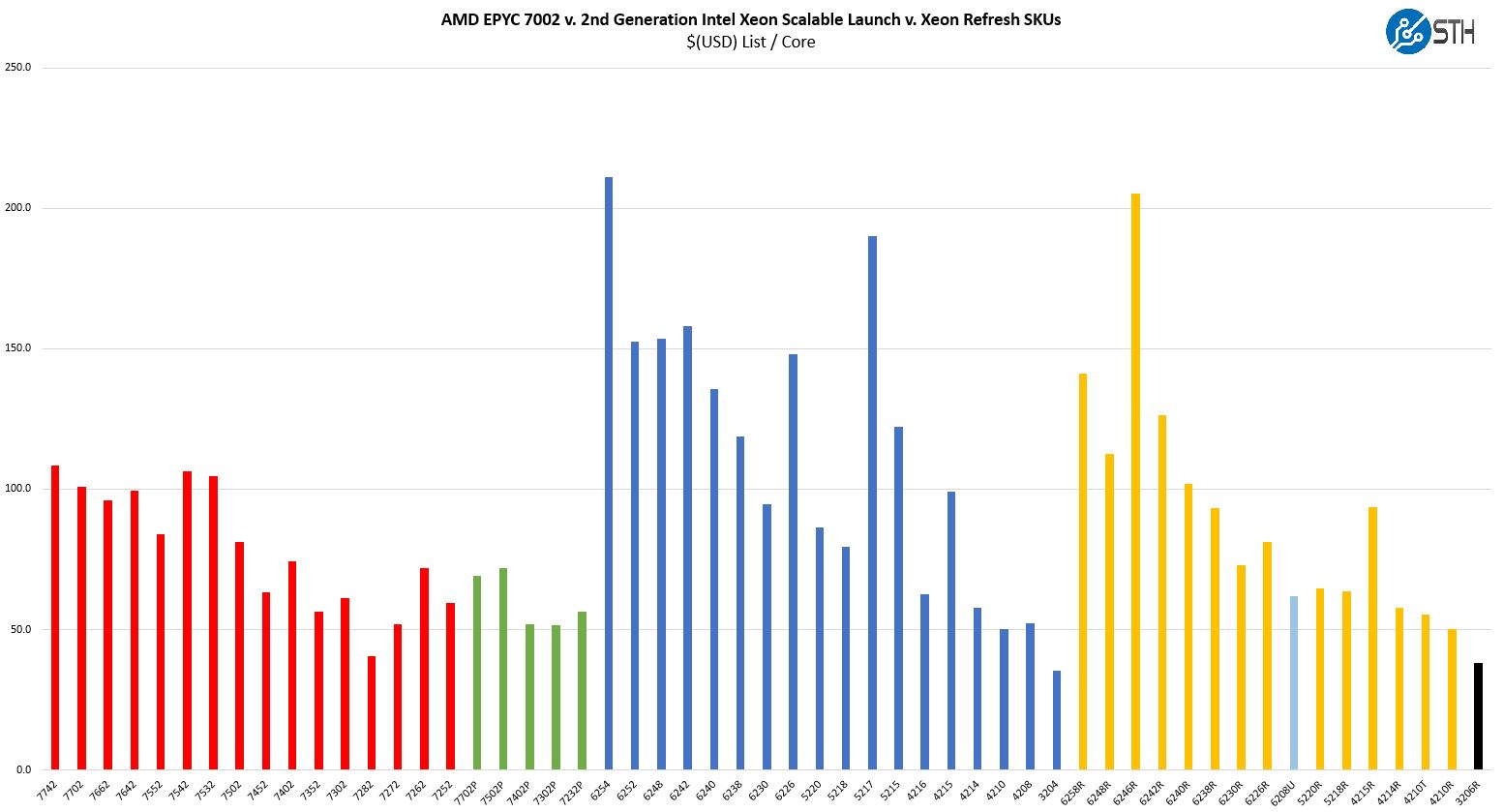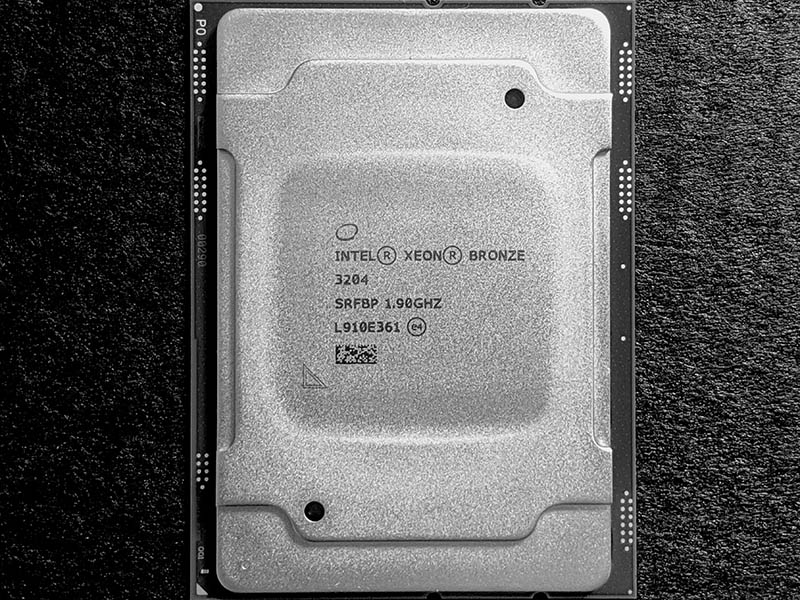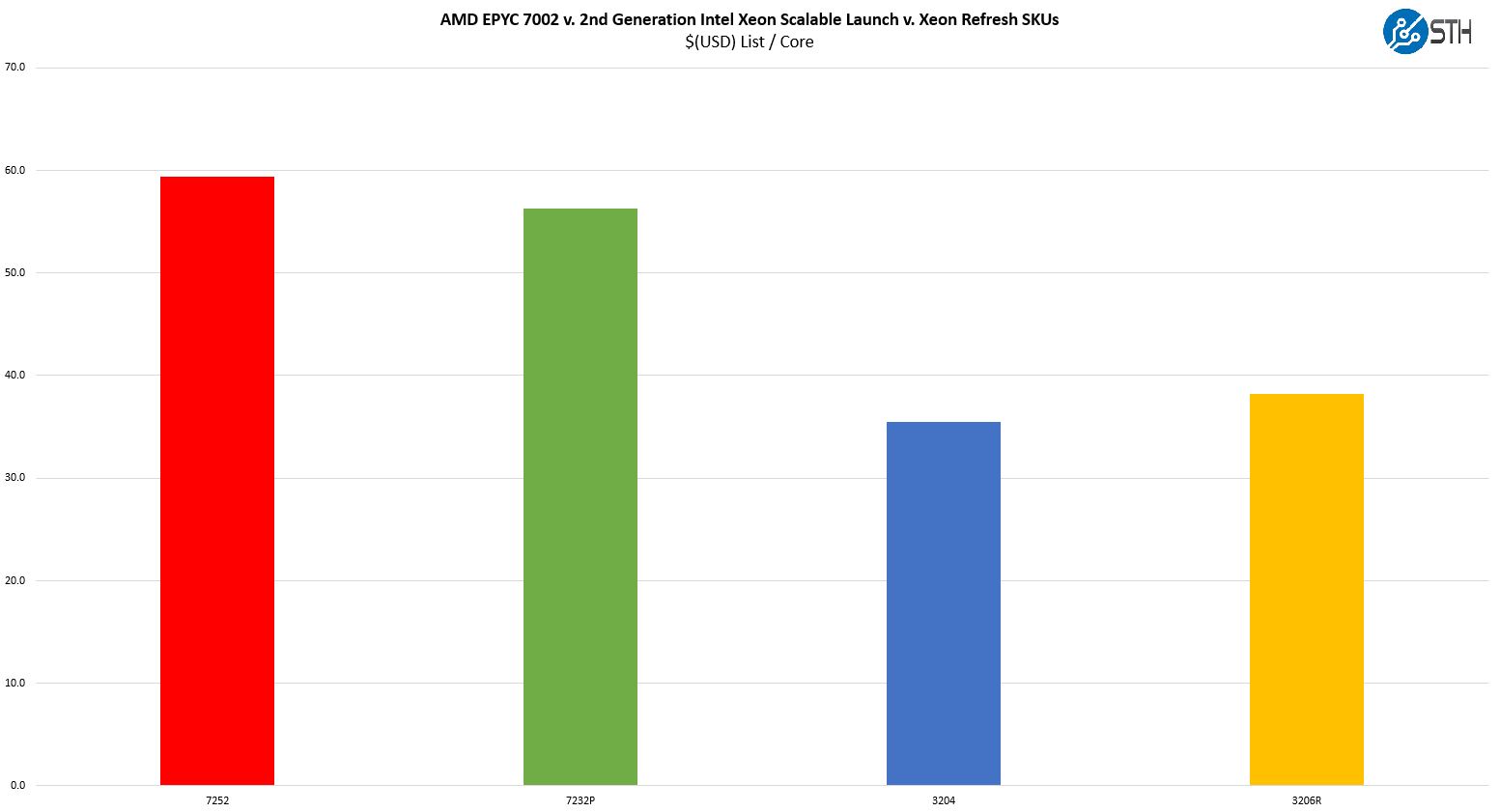Intel Xeon Bronze 3206R Market Positioning
Thes chips are not released in a vacuum instead, they have competition on both the Intel and AMD sides. When you purchase a server and select a CPU, it is important to see the value of a platform versus its competitors. Here is a look at the overall competitive landscape:

We are going to discuss this looking at Intel and then AMD alternatives below.
Intel Xeon Bronze 3206R v. Intel Alternatives
The main competition for the Intel Xeon bronze 3206R comes from three SKUs. The Xeon Bronze 3204, Xeon Silver 4208, and Xeon Silver 4210R.
The Intel Xeon Bronze 3204 may be the most competitive. That is effectively the same chip with 25% fewer cores (6 v. 8 cores.) It also sheds around 30% of the cost as a part that is just over $200. If one is truly in the market for the least expensive Intel CPU to put in a socket, then the Xeon bronze 3204 is a better option even if it is a pre-refresh CPU.

The Intel Xeon Silver 4208 and Silver 4210R are in a similar competitive position. If one wants significantly more performance, at a modest cost increment, then the Silver 4208 or Silver 4210R are much better options. On the other hand, there are so many servers out there that offer the lowest-cost possible chips that this added performance is nearly irrelevant yet the relatively small cost increases are real and impactful.
Intel Xeon Gold 3206R v. AMD EPYC 7002 “Rome”
The AMD EPYC 7002 “Rome” competition is a much harder comparison. AMD does not have a price competitive part here. As a result, if we take the two lowest-end AMD EPYC 7002 and 2nd generation Xeon Scalable SKUs and put them on a cost per core chart, this is what we get.

To be fair here, the EPYC 7002 chips offer SMT so they are 16 thread parts. They have more I/O, PCIe Gen4, as well as more memory capacity and bandwidth.
The challenge AMD has in this generation is that the $475 AMD EPYC 7252 and the $450 EPYC 7232P cost around 50% more per socket than the Xeon Bronze 3206R. In an ultra-cost sensitive segment of the market, that can be a lot. The EPYC 7232P is a single-socket only part and the EPYC 7252 is a dual-socket part. Both also are higher TDP parts which is another point in Intel’s favor when providing a low-cost platform.
One area where AMD can be competitive is in the segment of being a low-cost option to light up a platform for PCIe I/O. If one has, for example, an archival storage server with the need for many PCIe lanes for NICs and hard drive HBAs, but does not need a lot of CPU, then a single-socket EPYC 7232P can cost less than two Xeon Bronze 3206R chips.
Even with that, for organizations that primarily use one or two systems models, the Bronze 3206R can be used in the same systems and sockets as the higher-end Xeons which makes integration easy. One does not have to introduce a new platform to save $100-200 on a chip by switching to an AMD system.
At some point, AMD needs to have an answer for the sub-$450 CPU market so it can better compete at a portfolio level versus Xeon Bronze.
Final Words
This is perhaps one of the easier products to review from the Intel portfolio. This chip offers increased clocks and performance from a Bronze 3106 at the same price so it becomes an immediate recommendation to replace the Bronze 3106 with Bronze 3206R’s in your configurations. Otherwise, it is for those who do not need the solid low-end performance of Xeon Silver, and yet need more performance than the Bronze 3204 and a price somewhere between the two.
The hardest part about the Xeon Bronze 3206R is this narrow market focus. We cannot recommend it based on performance, yet there is a significantly lower cost and better performance per dollar part available with the Bronze 3204.
While this may not be the highest-performance CPU we review, it is a lower-end unit that will find its way into the low performance, low power, and low cost segment through a number of different market drivers.




For future articles, can you please include benchmark results from other CPUs that ServeTheHome users might use? Perhaps one or 2 each from Xeon D/E, Atom 3xxx, and Epyc 3xxx.
At this price point, the Xeon 3206r is a good base for a home virtualization server so it would be nice to be able to directly compare to other similarly priced CPUs. Thanks!
John, thanks for this review. I have a file server that needs an overhaul, and I do not want to spend more on it than I have to. This CPU or the 4208 look good. Intel’s product stack is mind numbingly complex and talking to a sales rep about Intel always leaves me feeling like I’m being taken advantage of. It is nice to see some 3rd party coverage of the more pedestrian chips.
Should’ve compared it to a ryzen then. Sure, no registered ddr, but all the rest is still in place. 24 available pcie Lanes, base price of around $100, boost clock of twice the bronze CPU.. not to mention power envelope of 35W or less.
ProDigit – I think those are completely different markets which is why we are not comparing them.
It turns out, the Bronze series has a few specific niches which are what we are focused on.
If this CPU is advertised under “cost saving” category, I think it can’t compete with Ryzen CPUs if one really needs to shave BOM cost.